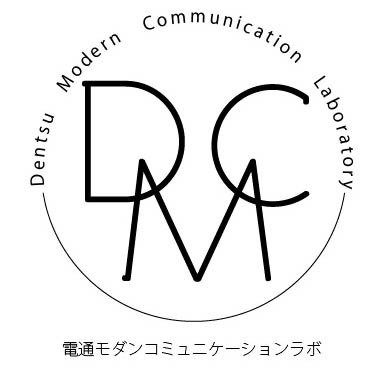In recent years, the keyword "design thinking" has flooded the business book sections of bookstores. As someone in an advertising agency who uses the word "design" frequently in various contexts every day, I can't help but feel a bit skeptical—wondering what kind of people are making what kind of references to our specialized field?
However, after reading this book, I deeply regretted that petty attitude in every sense. I introduce Kuniyoshi Sasō's Why Design Thinking is Essential for 21st Century Business (Cross Media Publishing).

The author graduated from the University of Tokyo's Faculty of Law, worked on marketing numerous hit products at the world's largest US consumer goods manufacturer, then moved to a major Japanese electronics company. He studied the world's most advanced design thinking methodology at the Illinois Institute of Technology's Department of Design (hereafter ID), returned to Japan to help launch a company-wide new business creation program, and then went independent. He currently runs a company that bridges business and design to support innovation creation.
...To be honest, rather than being skeptical of the author's impressive background, I started reading with a bit—no, quite a bit—of trepidation.
Why Design Thinking Now?
The book consists of seven chapters, from Chapter 0 to Chapter 6. The very reason why design thinking is necessary for 21st-century business, which also serves as the book's title, is addressed as early as Chapter 0. And because this is illustrated through the author's concrete business experiences, I found myself completely drawn in despite my initial wariness.
The author recounts that while working at a major US consumer goods company, where logic was his weapon in brand marketing, he was the type of marketer who steadily grew the business by executing tasks assigned by the company and his superiors. However, upon encountering a marketer within the same company who could "create difference" to launch new products that changed market rules, he sensed the limitations of his logic-first approach and began exploring the "right-brain world."
Hybrid Thinking: Utilizing Both Left and Right Brain
The very foundation of design thinking is the "designer's way of thinking" itself.
(Omitted)
When we talk about thinking methods, logical thinking and critical thinking—logical approaches driven by the left brain—are well-known. However, the thinking style designers at ID aim for is a hybrid approach that utilizes both the left and right brain. This means balancing the logical power of the left brain with the imaginative power of the right brain to consistently produce unique perspectives—practicing creation, or "intellectual production," on a daily basis. (P.40)
At the end of each chapter in this book, "Designer Common Sense" (right-brain thinking) and "Businessperson Common Sense" (left-brain thinking) are summarized in contrast. Reflecting on my own experiences working in teams with designers within the company, I'll pick out a few points that really stuck with me.

Exactly! Designers just keep creating. They bring sketches to meetings. And they're laid-back! They'll casually bring completely different sketches to the next day's meeting! (laughs). But they suddenly throw out ideas I, as a salesperson, would never even think of. However, as a salesperson, I'm concerned about execution, so I press them: "Yeah, it's cool, but how the hell are we gonna pull that off?" And they respond (showing me an unseen HP on a sticker-covered MacBook), "There's this person, so I think we could make it happen if we teamed up with them." "You know that person?" "No, I don't. I'll email them later." That's the vibe (laughs).
This isn't about which approach is right or wrong. As the author says, I think the key is flexibly utilizing both right-brain and left-brain thinking. But reflecting on myself, I realized that even in brainstorming meetings within my team, I often end up only contributing left-brain thinking (and I'm supposed to be from an ad agency!).
The Era of "Border-Crossing Talent" Who Connect People Is Coming
In the middle section of the book, the author generously shares and explains numerous methods and frameworks for achieving the design thinking process, drawing from his concrete experiences studying at ID, the world's leading design school. It's packed with photos, from actual Post-it notes and sketch memos used in class to stationery items (!), making it easy to understand even for businesspeople unfamiliar with design in their daily work. The sheer number of highly practical insights—ones you'll want to try in your next meeting—left my own copy covered in Post-it notes. For details, I highly recommend picking up this book.
Finally, I'd like to share the part that impressed me most: the insightful hints offered toward the end of the book for navigating a future world that constantly demands innovation.
The author predicts that the era of dividing innovation into three specialized functions—design (concept), business (commerce), and engineering (realization)—is over. Instead, "boundary-crossing talent"—those at the intersection of these specializations—will become the new professionals of the 21st century. And this "boundary-crossing talent" is precisely what he calls "H-shaped talent."
In an era where diverse people collaborate to generate innovation, the required skills are diversifying. The ability to reconfigure and leverage the expertise held by multiple individuals is becoming essential.
H-shaped talent possesses one strong specialty, a horizontal bar connecting to others' expertise, and the ability to connect with others to form an "H" – embodying the image of talent that "connects easily with people." (P.202)
This concept offered insight into what I've been pondering for years: how the role of salesperson at an advertising agency—a company with no inventory beyond its people—will evolve, and how it should evolve, in the business world of the 21st century.







